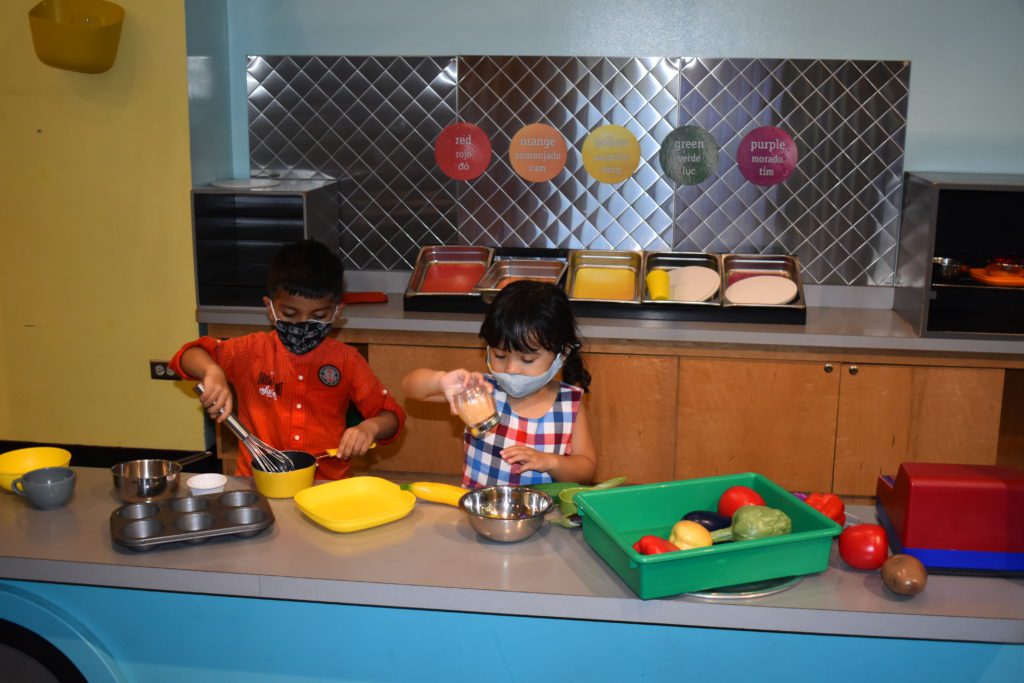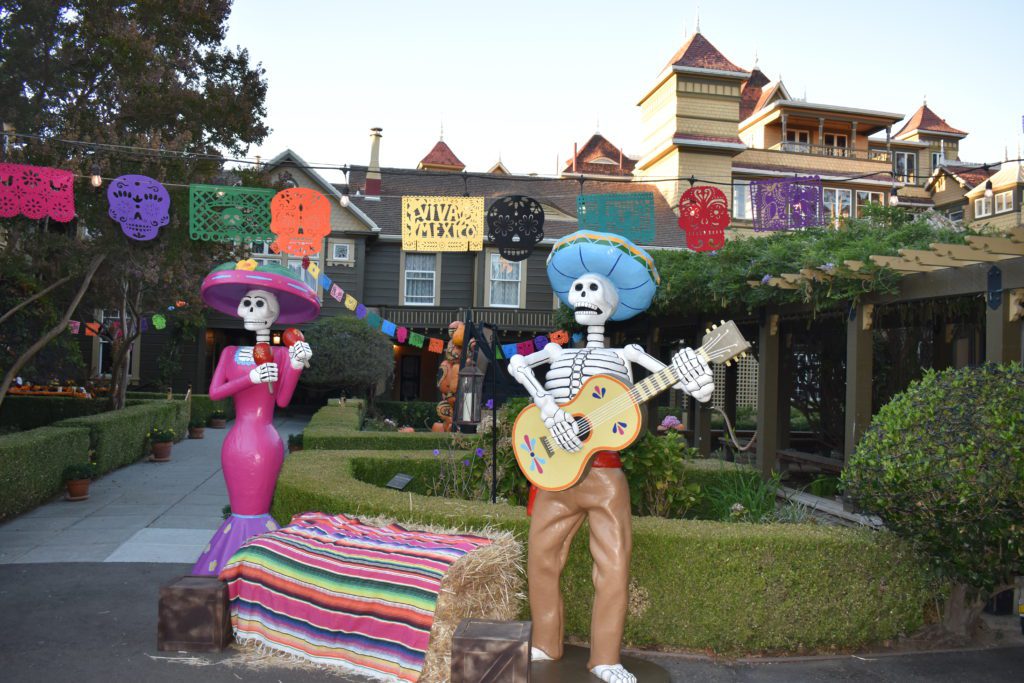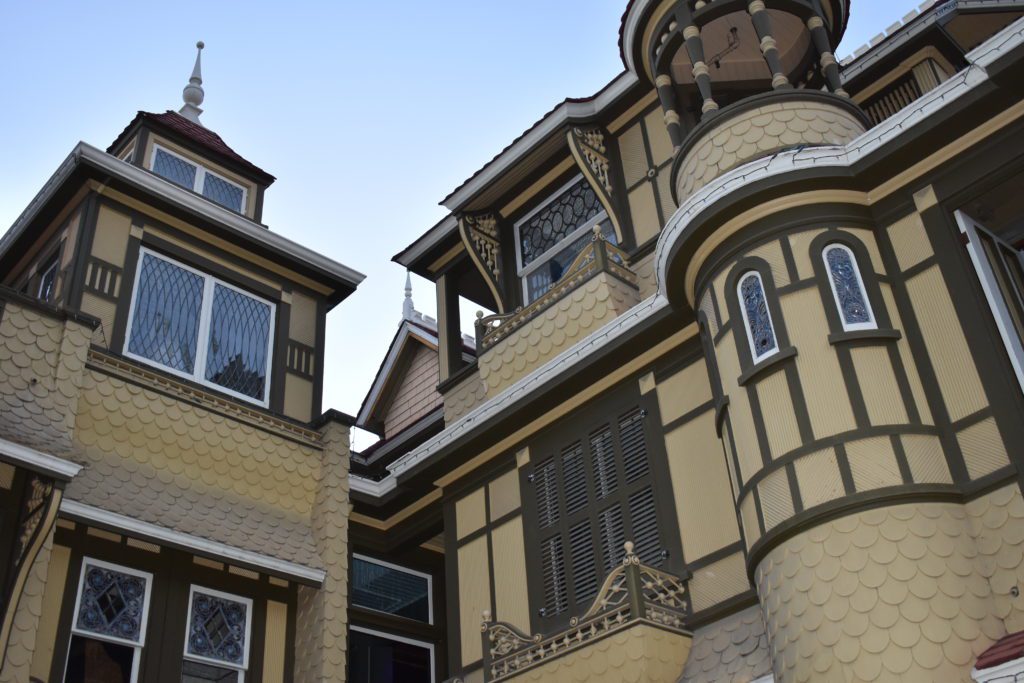The COVID-19 pandemic hit San Jose tourist attractions hard, but some have found creative ways to bring back visitors.
The Children’s Discovery Museum, Tech Interactive and Winchester Mystery House all closed during last year’s shelter in place, and have yet to fully recover. But through rainy day funds, donors and online programming, they stayed afloat despite the drop in revenue.
Derrick Seaver, CEO of the San Jose Chamber of Commerce, said it’s a tough time for businesses, especially those that rely heavily on in-person customers. From facing eviction to prolonged shutdowns and struggling to find workers, local businesses suffered through the pandemic.
“Now that the pandemic is turning a corner, there’s going to be a high demand for these activities again,” he told San José Spotlight.


‘It has been a really rough go’
Marilee Jennings, executive director of the Children’s Discovery Museum in downtown San Jose, said it will be a while before operations return to normal, as there’s not a COVID vaccine for children under 12. To stay engaged with the community, the museum shifted its story time online, complete with music and puppets.
The museum reopened in April. Jennings is happy it’s open again, but misses the energy of a thriving, social gathering space.
“When we first reopened, the children ran in blowing us kisses,” she told San José Spotlight.
Last Sunday, children explored a garden and pretended to cook and drive a fire engine. Kids learn problem-solving skills and collaboration at the museum. But best of all, Jennings said, kids get to be their own boss.
Parent Ameen Aslam said he appreciates having a place to go where his daughter can socialize with other kids.
But attendance is a fraction of pre-pandemic rates. Rather than its usual 1,500 visitors a day, only 400 guests are permitted per play session to keep social distancing. The museum also installed a new air filtration system and hand sanitation stations, and requires visitors to wear masks indoors.
Parent Katie Lesley said she feels reassured by the museum’s safety protocols.
“They keep it very sanitary, wiping everything down and limiting capacity,” Lesley said. “I like that it doesn’t feel crowded.”
The Children’s Discovery Museum was closed for 393 days, and its $9.5 million budget shrank to $4 million. Memberships, donations and reserve funds helped it survive.
“It has been a really rough go,” Jennings said. “Overnight, 50% of our income went away.”


Going online
The Tech Interactive reopened on Memorial Day weekend after being closed for 443 days. Guests eagerly waited in line on opening day, and CEO Katrina Stevens said it was nice to see families come through the doors.
Heather Park brought her sons to the museum last weekend.
“The kids have been waiting for this opportunity for a while,” Park told San José Spotlight. “We appreciate it being open.”
Reid Moreno, whose son was building a robot, said the museum feels safe and isn’t too crowded. His mother Helen appreciated the numerous sanitation stations and everyone wearing masks.
Financially, the museum suffered a significant loss during the pandemic. While its revenue was $5.4 million from Feb. 1, 2019 to Jan. 31, 2020, the following year it only made $500,000, Stevens said. About 40% of workers were furloughed and monthly attendance declined from 37,000 visitors in July 2019 to 6,500 this July.
Pre-pandemic, the museum saw about 1,500 visitors a day. Fortunately, the museum had financial reserves, qualified for loans and donors stepped up to support it.


While closed, the museum pivoted to online learning, launching The Tech Interactive at Home. It also created virtual labs and online field trips, one of which received 1.5 million views according to spokesperson Marika Krause Ponce.
“The engagement online has been incredible,” Krause Ponce said. “Lots of families were grateful to have a fun focus, especially in those first dark months.”
The Tech Challenge, a kids design competition, also went online—with participants from all 50 states and in countries as far away as Pakistan.
Stevens said the museum strives to empower youth to be innovative problem-solvers. The museum partnered with school districts and the Mexican Heritage Plaza to send home STEM activity kits at food distribution sites during the pandemic.
“We’re excited to have a slow, steady increase in attendance, but it’s nowhere near what we normally have,” Stevens said. “Folks are still nervous. It’s going to take some time.”


An empty house
Walter Magnuson, general manager of the Winchester Mystery House, said he couldn’t be more excited guests are returning.
“We have a lot to share, especially this time of year,” he told San José Spotlight.


In addition to a “Lost in the House” tour, a movie projected onto the front of the house brought a recent All Hallows’ Eve event to life.
“This is one of those rare places that is still here,” Magnuson said. “You can walk the halls Sarah built. It’s the mystery and the wonder of why she did it that still resonates and fascinates people.”
From 1886 to 1922, construction at the eight-room farmhouse Sarah Winchester bought rarely ceased. Some claim it was to confuse spirits of those killed by the Winchester rifle. Today, the Queen Anne Victorian mansion sports 160 rooms, many featuring Tiffany stained glass, intricate door plates, polished wood and period furnishings.
Peculiarities include the number 13 present in ceiling tiles, stairs that go to the ceiling, doors that lead to nowhere and a seance room. Since its opening in June 1923, guests have shared experiences of strange sounds, odd breezes and feeling like they’re not alone, Magnuson said. Some said they’ve seen the ghost of a workman pushing a wheelbarrow in the basement, he added.


After the Winchester Mystery House closed in March 2020, it offered a virtual tour, sold merchandise online and worked with a licensing agency to bring in revenue. When possible, management offered in-person self-guided house tours and new activities such as axe-throwing and a Houdini-themed escape room.
“We were like a startup,” Magnuson said, “and needed to find ways to innovate and come up with revenue streams. We had to come up with things people would enjoy and let us keep the lights on.”
Business was down at least 75% last year compared to pre-pandemic times, Magnuson said, calling 2020 “a pretty catastrophic year.”
Magnuson said capacity had to be restricted when the house reopened in March. They also doubled janitorial work, added ventilation and required masks. He said they’re slowly rebounding and are about 30% away from normal.
“We’re trying to get as many guests here as possible, but safely,” he said. “We’re lucky we have a great story and people from all over the world want to come visit.”
Contact Lorraine Gabbert at [email protected].



Leave a Reply
You must be logged in to post a comment.